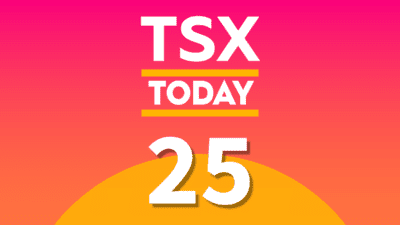Dollarama Inc. (TSX:DOL) reported its fiscal 2018 third-quarter results on December 6. While earnings per share were higher than expected, sales were somewhat disappointing as a result of a weak transaction growth and the opening of fewer stores.
Profit beat in Q3, but sales growth lower than expected
For the three-month period ended October 29 — which doesn’t include the crucial day of Halloween — sales totaled $810.6 million, which is up 9.7% from the same quarter last year. Analysts expected, on average, sales of $824.9 million. The average customer spent 4.5% more per transaction.
Same-store sales — a key indicator of the performance of businesses that have been opened for at least one year — rose by 4.6%, while analysts expected an increase of 6%.
This lower sales growth can be attributed to two factors. The number of transactions increased by only 0.1% during the period, and Dollarama opened only 10 new stores compared with 18 stores in the same quarter in 2016.
Despite a somewhat disappointing sales performance, the retail chain led by Neil Rossy still managed to outpace expectations in terms of profits. Dollarama posted a profit of $1.15 per share, which is up 25% from last year and $0.04 higher than analysts’ forecast. Net income rose by 18% to $130.1 million.
The dollar-store operator posted a gross margin of 40.1%, higher than the 39.5% margin it had a year ago. The company also managed to control its costs growth. Store operating, general, and administrative expenses (SG&A) increased by 0.6% to $117.6 million, which represent 14.5% of sales compared with 15.8% in the third quarter of last year.
Forecast raised
Dollarama also raised its forecast for the current fiscal year and unveiled its preliminary forecast for the fiscal year 2019. The chain is still planning to open 60-70 stores this year as well as next year.
The gross margin is expected to be between 38.5% and 39.5% this year rather than between 38% and 39% as previously forecasted. SG&A costs should be lower than expected.
However, Dollarama anticipates an increase in SG&A costs in 2019; these should increase from 14.5-15% this year to 15-15.5% next year, mostly due to the minimum wage rise in Ontario. Approximately 41% of the chain’s stores are in this province.
The retailer will likely wait for other retailers to hike prices in response to minimum wage increases before it does the same.
Dollarama not afraid of competitors like Miniso
Dollarama doesn’t fear the arrival of new competitors, like the Chinese retailer Miniso, which has opened six stores in British Columbia in recent months and plans to open 500 more in the country in the coming years.
Neil Rossy thinks that Miniso’s products are targeting different consumers, and for that reason, Miniso is not a serious threat to Dollarama.
In its stores, Miniso offers up to 40,000 household products ranging from cosmetics to fashion accessories to kitchenware, but no food, unlike Dollarama.
According to Rossy, Dollarama, which currently owns 1,135 stores, still plans to open up to 1,700 stores in the next 10 years in Ontario, Quebec, western Canada, and the Atlantic.
Bottom line
Dollarama is one of the most effective Canadian retailers and one of the least threatened by Amazon in the short term.
Dollarama’s wide product offerings for very low prices give the retailer a strong competitive advantage, as consumers are increasingly looking for value.
It’s still one of the best growth stocks in the retail sector and a great defensive stock to hold for a long time.
Analysts expect Dollarama to continue to deliver double-digit growth in the years to come. So, while Dollarama is trading at a high P/E, I believe it’s still a great buy, but I would wait for a pullback before buying a lot of shares.








